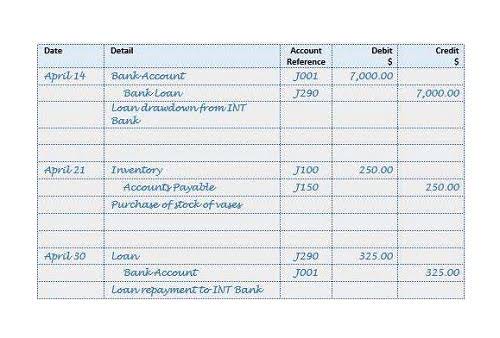On the other hand, equity refers to shareholder’s or owner’s equity, which is how much the shareholder or owner has staked into the company. Small business owners typically have a 100% stake in their company, while growing businesses may have an investor and share 20%. While single-entry accounting can help you kickstart your bookkeeping knowledge, it’s a dated process that many other business owners, investors, and banks won’t rely on. That’s why you’re better off starting with double-entry bookkeeping, even if you don’t do much reporting beyond a standard profit and loss statement. The accounting equation is so fundamental to accounting that it’s often the first concept taught in entry-level courses. It offers a quick, no-frills answer to keeping your assets versus liabilities in balance.
This is because creditors – parties that lend money such as banks – have the first claim to a company’s assets. For example, an increase in an asset account can be matched by an equal increase to a related liability or shareholder’s equity account such that the accounting equation stays in balance. Alternatively, an increase in an asset account can be matched by an equal decrease in another asset account. It is important to keep the accounting equation in mind when performing journal entries. The accounting equation helps to assess whether the business transactions carried out by the company are being accurately reflected in its books and accounts.
Arrangement #3: Assets = Liabilities + Owner’s Capital – Owner’s Drawings + Revenues – Expenses
Single-entry accounting only shows expenses and sales but doesn’t establish how those transactions work together to determine profitability. So now let’s discuss the fundamental accounting equation, the foundation for everything you’re going to learn in this class. It’s already on your paper so I guess you’ve seen it already.
Which three components make up the Accounting Equation?
The capital would ultimately belong to you as the business owner. In the case of a limited liability company, capital would be referred to as ‘Equity’. To see this report showing the accounting equation, check out the lesson on the balance sheet. Not only does the accounting equation underpin all accounting entries, but it also forms the exact structure of one of accounting’s most important reports – what is comprehensive loss in accounting the balance sheet.
For instance, inventory is very liquid — the company can quickly sell it for money. Real estate, though, is less liquid — selling land or buildings for cash is time-consuming and can be difficult, depending on the market. This long-form equation is called the expanded accounting equation. Almost all businesses use the double-entry accounting system because, truthfully, single-entry is outdated at this point.
NY Jobs CEO Council Financial Analyst
- Every accounting entry has an opposite corresponding entry in a different account.
- It forms the base for double-entry bookkeeping, which forms the base of how every company on the surface of the Earth declares its financial conditions.
- In this system, every transaction affects at least two accounts.
- Not only does the accounting equation underpin all accounting entries, but it also forms the exact structure of one of accounting’s most important reports – the balance sheet.
- That is, each entry made on the debit side has a corresponding entry (or coverage) on the credit side.
- The accounting equation is the primary equation used in accounting.
It is one of those equations from which a multitude of other equations is derived. It is the most fundamental equation upon which multitudes of other equations are based upon. It forms the primary principle of accounting, and it helps in maintaining the balance sheet of a company. Before technological advances came along for these growing businesses, bookkeepers were forced to manually manage their accounting (when single-entry accounting was the norm).
In Double-Entry Accounting, there are at least two sides to every financial transaction. Every accounting entry has an opposite corresponding entry in a different account. This principle ensures that the Accounting Equation stays balanced.
- Any debt which is not to be paid within a year is called long-term debt.
- Ted is an entrepreneur who wants to start a company selling speakers for car stereo systems.
- Furthermore, it forms the backbone of double-entry bookkeeping.
- The remainder is the shareholders’ equity, which would be returned to them.
- Drawings are amounts taken out of the business by the business owner.
- However, equity can also be thought of as investments into the company either by founders, owners, public shareholders, or by customers buying products leading to higher revenue.
Any debt which is not to be paid within a year is called long-term debt. The companies usually borrow long-term debt to finance a new long-term project such as a new factory. On the liabilities side of a balance sheet, short-term and long-term debt are listed first of all. Furthermore, it forms the backbone of double-entry bookkeeping.
If a company has liabilities of $65,000 and equity of $25,000, what are the company’s assets worth?
For example, when a company is started, its assets are first purchased with either cash the company received from loans or cash the company received from investors. Thus, all of the company’s assets stem from either creditors or investors i.e. liabilities and equity. Valid financial transactions always result in a balanced accounting equation which is the fundamental characteristic of double entry accounting (i.e., every debit has a corresponding credit). All assets owned by a business are acquired with the funds supplied either by creditors or by owner(s).
Components of the Basic Accounting Equation
Compare that with a long term liability which is payable in over 1 year, right? And these are going to be things like long term loans when we get a bank loan or bonds. Bonds is another way to raise money through loaning out through getting a loan, okay? The Financial Accounting Equation is essential in financial management as it provides a framework for understanding a company’s financial position. It helps in determining the resources the company owns (current assets), the obligations it owes to others (liabilities), and the amount of money that belongs to the owners (equity). By keeping track of these elements, businesses can make informed decisions about their finances, plan for the future, and assess their financial health.
Individual transactions which result in income and expenses being recorded will ultimately result in a profit or loss for the period. The term capital includes the capital introduced by the business owner plus or minus any profits or losses made by the business. Profits retained in the business will increase capital and losses will decrease capital. The accounting equation will always balance because the dual aspect of accounting for income and expenses will result in equal increases or decreases to assets or liabilities.
However, equity can also be thought of as investments into the company either by founders, owners, public shareholders, or by customers buying products leading to higher revenue. An asset is a resource that is owned or controlled by the company to be used for future benefits. Some assets are tangible like cash while others are theoretical or intangible like goodwill or copyrights. If we rearrange the Accounting Equation, Equity is equal to Assets minus Liabilities. Net Assets is the term used to describe Assets minus Liabilities. Assets are the stuff that a business owns that have value.
Assets include cash and cash equivalents or liquid assets, which may include Treasury bills and certificates of deposit (CDs). These are the opposite of account receivables; they are payments that a company has to make to its suppliers. Consider, for example, a Company ABC which has bought a truck worth ten thousand dollars to transport its product and ship them to their customers. The company ABC paid for the truck by borrowing from the bank.
This is because, in double-entry bookkeeping, both sides of the accounting equations must be balanced with each other. In other words, if we subtract one from the other, the answer must always be zero. Equity, also known as net worth or owner’s capital, represents the residual interest in a company’s assets after deducting liabilities. It is the owner’s claim on the company’s assets and is equal to the total assets minus total liabilities. Taking time to learn the accounting equation and to recognise the dual aspect of every transaction will help weighted average method of material costing pros and cons you to understand the fundamentals of accounting.
Your balance sheet is one of three financial statements. It’s a tool used by company leaders, investors, and analysts that better helps them understand the business’s financial health in terms of its assets versus liabilities and equity. In above example, we have observed the impact of twelve different transactions the direct write off method on accounting equation. Assets are going to be anything tangible or intangible that is owned by the company. So this is anything that they own and we’re going to break these up into 2 categories.
How the Accounting Equation Relates to the Balance Sheet
The cash (asset) of the business will increase by $5,000 as will the amount representing the investment from Anushka as the owner of the business (capital). Assets typically hold positive economic value and can be liquified (turned into cash) in the future. Some assets are less liquid than others, making them harder to convert to cash.




